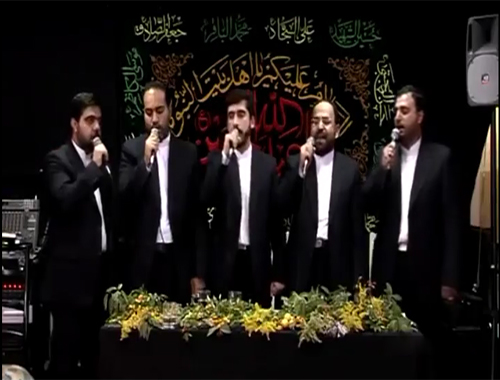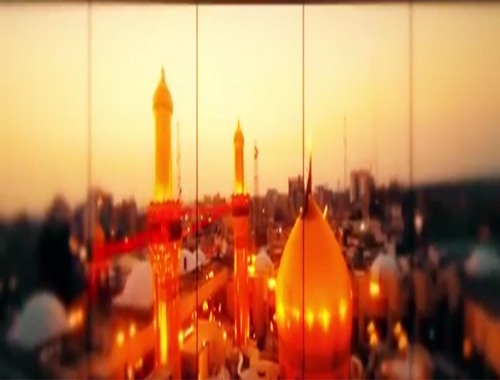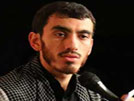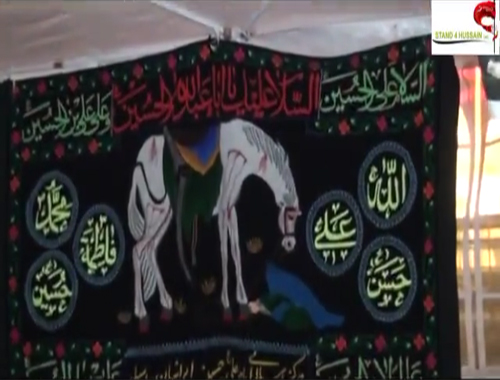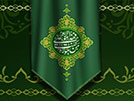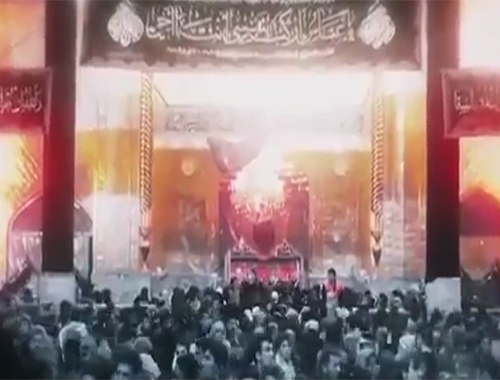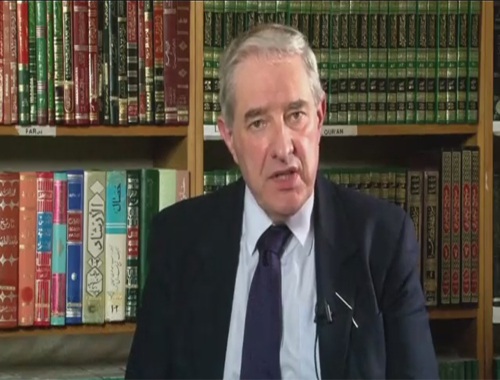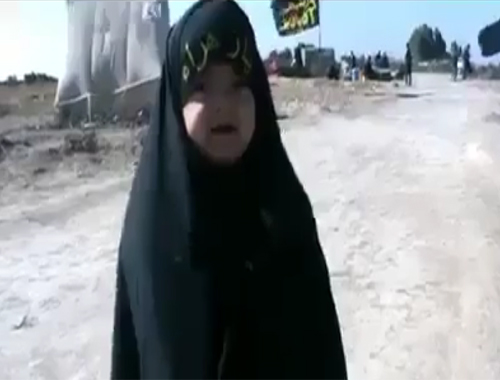Hajj Glossary
- Details
- Hits: 3765
Hajj Glossary
Al-Haram
The Holy City of Makkah and its surrounding areas. Al-Haram has different boundaries. These boundaries extend to three miles on one side, seven on the other and nine miles towards Jeddah. Within these boundaries of Al-Haram it is forbidden to hunt, bother any animal, or to cut grass or trees. One is permitted to kill dangerous animals like snakes, scorpions, rats or animals with rabies (dogs, etc.)
The Holy City of Makkah and its surrounding areas. Al-Haram has different boundaries. These boundaries extend to three miles on one side, seven on the other and nine miles towards Jeddah. Within these boundaries of Al-Haram it is forbidden to hunt, bother any animal, or to cut grass or trees. One is permitted to kill dangerous animals like snakes, scorpions, rats or animals with rabies (dogs, etc.)
Al-Mash'ar/Muzdalifa
The Valley between Arafaat and Mina, where pilgrims should make a Du’a after they have slept in Muzdalifa while they are going to Makkah to throw Jamrat al-Aqabah on the morning of the 10th of Dhul-Hijjah.
Allahu Akbar
God is great.
Arafah (Arafaat)
The area that surrounds Mount Rahmah, Southeast of Makkah.
Ashwat
Plural of Shawt - See Shawt.
Asr
Afternoon. The Asr prayer is the prescribed prayer to be performed between afternoon and sunset.
Black Stone
The stone in the Southeast corner of the Kaa’bah from which Muslims begin the Tawaf. Also called as Hijr Al-Aswad.
Circumambulating
To walk around (something), especially as part of a ritual. See also: Tawaf.
Du’a
Supplication for Allah.
Dhul-Hijjah
See Thul-Hijjah.
Eidul Adha
One of the Islamic holiday. It represents the celebration of sacrifice.
Fajr
Dawn. The Fajr prayer is the prescribed prayer to be performed between dawn and sunrise.
Ghusul
Complete bathing.
Ghurub
Sunset. Maghrib prayer is the prescribed sunset prayer. Also see Maghrib
Hajira/Hajar/Hager
Wife of prophet Ibrahim/Abraham (pbuh) and mother of prophet Ismail/Ishmael (pbuh).
Hajj
The 5th pillar of Islam, to be performed at least once in a lifetime.
Ifadah
Refers to the Tawaf that is done by a Muslim when she/he comes from Muzdalifa.
Ihraam/Ehram
The state in which one starts Umrah or Hajj, and during which certain acts are prohibited. Some of these acts are: cutting hair, shaving any parts of the body, clipping nails, putting perfumes or colognes, killing or hunting animals, sexual intercourse, making marriage proposals, or marriage contracts.
Isha
Isha. The Isha prayer is the prescribed prayer to be performed between once the night settles until dawn.
Istlam
The act of kissing the Hajr-e-Aswad (Black Stone) is called Istlam.
Jam’ Prayers
Combining prayers. Under certain circumstances, Zuhur and Asr prayers can be combined, and Maghrib and Isha prayers can be combined. When this is done, the two prayers are offered at the same time, with one adhan and two separate Iqamahs, one for each prayer.
Jamrah
The pillar at which the pilgrim throws pebbles. There are three Jamrahs pillars at which pilgrims throw pebbles. Jamrah Al-Ula, Jamara Al-Wusta & Jamrah Al-Aqabah.
Kaa’bah
The square stone building in al-Haraam mosque in Makkah and towards which all Muslim face in every prayer.
Kaffara
Means expiation.
Labbaik
A call meaning "Here I Come". It is the Muslim's expression of answering the invitation of God to perform pilgrimage.
Madinah
The city which Prophet Muhammad (pbuh) migrated, about 450 km northeast of Makkah.
Maghrib
Sunset. The Maghrib prayer is the prescribed prayer to be performed between sunset and the time when all day light is gone.
Makkah
The holiest city for Muslims, located in Western Saudi Arabia.
Maqam-e-Ibraheem
Abraham’s station, a small glass station 30 meters from the Kaa’bah door. It is the place where prophet Abraham used to stand when he was building the Kaa’bah.
Marwah
The hill on which a pilgrim ends his/her sayee. It is about 250 meters Northeast of the Kaa’bah.
Mina
An area close to Makkah on the road to Arafah.
Miqat
The place where Muslims declare their intention to make Hajj or Umrah and begin the state of Ihraam. The Miqat boundary is anchored by different townships and locations in different directions around the Kaabah. They are (1)Dhul-Hulaifa in the North, (2)Yalamlam in the South-East, (3)Zat Irq in the North-East, (4)Al-Johfa in the North-West, (5)Qarn al-Manazil in the East.
Muzdalifa/Al-Mash'ar
The place between Arafah and Mina where pilgrims stay the night on the 9th of Thul-Hijjah.
Nafl
A Nafl (supererogatory) act is an act of worship done because it has been suggested to us by the Prophet (pbuh) and practiced by him on at least one or two occasions. It earns a reward for the person performing it and its omission does not incur any punishment.
Niyyah
Intention. When a person is performing pilgrimage, he/she has to set the intention.
Odhiya
See Udhia
Pilgrimage
The English word for Hajj. One of the 5 pillars of Islam.
Qiran(Combined Hajj)
The type of Hajj where a pilgrim makes Umrah in the same state of Ihraam. This is applicable only to persons who are resident within a radius of 16 Farsakh or 48 miles Sharii of Makkah.
Ruku
A position in the prayer where the Muslim leans forward and puts his/her hands on the knees.
Safa
The hill on which a pilgrim begins his/her sayee (walking). It is about 200 m Southeast of the Kaa’bah.
Sayee
The act of walking between the two hills - Safa and Marwah.
Shawt
Each complete round (circuit) around the Kaa’bah constitutes a Shawt. Plural of Shawt is Ashwat. The pilgrim performs 7 Ashwat in a Tawaf.
Takbeer
Saying Allahu Akbar.
Talbiyah
The response to Allah’s call for Hajj.
Tamattu(Advantageous Hajj)
The type of Hajj where a pilgrim starts with Umrah then makes Hajj later on but in the same year.
Tarwiyah
The 8th day of Thul-Hijjah.
Tashreeq
The 11th, 12th, and 13th days of Thul-Hijjah.
Tawaf
Circumambulating the Kaa’bah. There are many types of Tawaf, such as Tawaf al-Qudum (upon arriving to Makkah), Tawaf al-Ifadah (when coming to Makkah from Mina after the day of Arafah), Tawafun-Nisa (The Tawaf of Women) and Tawaf al-Wada (Farewell Tawaf) before departing from Makkah.
Thul-Hijjah
The twelfth month of the Islamic lunar year.
Udhia
It is the animal sacrifice that a Muslim offers to God.
Umrah
An Islamic ritual that is performed at Makkah anytime of the year except between the 9th and the 13th of Thul-Hijjah (these days are only reserved for the full pilgrimage or Hajj). It includes Tawaf 7 times, Sayee between the hills of Safa and Marwah. It also requires some obligations from the pilgrim until the state of Ihraam is ended. Entering into the state of Ihraam and removal of Ihraam is carried out in the same manner as for the full pilgrimage.
Vudu
See Wudu.
Wadah
Tawaf al-Wadah is the last (farewell) circuit around the Kaa’bah.
Wudu
The act of performing ablution.
Yawm
Literally means Day. There are many meaningful days in the Hajj proceedings such as Yawm-e-Tarwiyah (first day of Hajj/8th day of Thul-Hijjah), Yawm-e-Arafa (second day of Hajj /9th day of Thul-Hijjah), Yawm-e-Nahr (third day of Hajj/Qurbani in Mina/10th day of Thul-Hijjah), etc.
Zamzam
The name of a well of water that sprang up beneath Prophet Ishmael's (pbuh) feet's, when he was an infant. It is about 150 m Southeast of the Kaa'bah.
Zuhur
Noon. The Zuhur prayer is the prescribed prayer to be performed between mid-day and afternoon.
The Valley between Arafaat and Mina, where pilgrims should make a Du’a after they have slept in Muzdalifa while they are going to Makkah to throw Jamrat al-Aqabah on the morning of the 10th of Dhul-Hijjah.
Allahu Akbar
God is great.
Arafah (Arafaat)
The area that surrounds Mount Rahmah, Southeast of Makkah.
Ashwat
Plural of Shawt - See Shawt.
Asr
Afternoon. The Asr prayer is the prescribed prayer to be performed between afternoon and sunset.
Black Stone
The stone in the Southeast corner of the Kaa’bah from which Muslims begin the Tawaf. Also called as Hijr Al-Aswad.
Circumambulating
To walk around (something), especially as part of a ritual. See also: Tawaf.
Du’a
Supplication for Allah.
Dhul-Hijjah
See Thul-Hijjah.
Eidul Adha
One of the Islamic holiday. It represents the celebration of sacrifice.
Fajr
Dawn. The Fajr prayer is the prescribed prayer to be performed between dawn and sunrise.
Ghusul
Complete bathing.
Ghurub
Sunset. Maghrib prayer is the prescribed sunset prayer. Also see Maghrib
Hajira/Hajar/Hager
Wife of prophet Ibrahim/Abraham (pbuh) and mother of prophet Ismail/Ishmael (pbuh).
Hajj
The 5th pillar of Islam, to be performed at least once in a lifetime.
Ifadah
Refers to the Tawaf that is done by a Muslim when she/he comes from Muzdalifa.
Ihraam/Ehram
The state in which one starts Umrah or Hajj, and during which certain acts are prohibited. Some of these acts are: cutting hair, shaving any parts of the body, clipping nails, putting perfumes or colognes, killing or hunting animals, sexual intercourse, making marriage proposals, or marriage contracts.
Isha
Isha. The Isha prayer is the prescribed prayer to be performed between once the night settles until dawn.
Istlam
The act of kissing the Hajr-e-Aswad (Black Stone) is called Istlam.
Jam’ Prayers
Combining prayers. Under certain circumstances, Zuhur and Asr prayers can be combined, and Maghrib and Isha prayers can be combined. When this is done, the two prayers are offered at the same time, with one adhan and two separate Iqamahs, one for each prayer.
Jamrah
The pillar at which the pilgrim throws pebbles. There are three Jamrahs pillars at which pilgrims throw pebbles. Jamrah Al-Ula, Jamara Al-Wusta & Jamrah Al-Aqabah.
Kaa’bah
The square stone building in al-Haraam mosque in Makkah and towards which all Muslim face in every prayer.
Kaffara
Means expiation.
Labbaik
A call meaning "Here I Come". It is the Muslim's expression of answering the invitation of God to perform pilgrimage.
Madinah
The city which Prophet Muhammad (pbuh) migrated, about 450 km northeast of Makkah.
Maghrib
Sunset. The Maghrib prayer is the prescribed prayer to be performed between sunset and the time when all day light is gone.
Makkah
The holiest city for Muslims, located in Western Saudi Arabia.
Maqam-e-Ibraheem
Abraham’s station, a small glass station 30 meters from the Kaa’bah door. It is the place where prophet Abraham used to stand when he was building the Kaa’bah.
Marwah
The hill on which a pilgrim ends his/her sayee. It is about 250 meters Northeast of the Kaa’bah.
Mina
An area close to Makkah on the road to Arafah.
Miqat
The place where Muslims declare their intention to make Hajj or Umrah and begin the state of Ihraam. The Miqat boundary is anchored by different townships and locations in different directions around the Kaabah. They are (1)Dhul-Hulaifa in the North, (2)Yalamlam in the South-East, (3)Zat Irq in the North-East, (4)Al-Johfa in the North-West, (5)Qarn al-Manazil in the East.
Muzdalifa/Al-Mash'ar
The place between Arafah and Mina where pilgrims stay the night on the 9th of Thul-Hijjah.
Nafl
A Nafl (supererogatory) act is an act of worship done because it has been suggested to us by the Prophet (pbuh) and practiced by him on at least one or two occasions. It earns a reward for the person performing it and its omission does not incur any punishment.
Niyyah
Intention. When a person is performing pilgrimage, he/she has to set the intention.
Odhiya
See Udhia
Pilgrimage
The English word for Hajj. One of the 5 pillars of Islam.
Qiran(Combined Hajj)
The type of Hajj where a pilgrim makes Umrah in the same state of Ihraam. This is applicable only to persons who are resident within a radius of 16 Farsakh or 48 miles Sharii of Makkah.
Ruku
A position in the prayer where the Muslim leans forward and puts his/her hands on the knees.
Safa
The hill on which a pilgrim begins his/her sayee (walking). It is about 200 m Southeast of the Kaa’bah.
Sayee
The act of walking between the two hills - Safa and Marwah.
Shawt
Each complete round (circuit) around the Kaa’bah constitutes a Shawt. Plural of Shawt is Ashwat. The pilgrim performs 7 Ashwat in a Tawaf.
Takbeer
Saying Allahu Akbar.
Talbiyah
The response to Allah’s call for Hajj.
Tamattu(Advantageous Hajj)
The type of Hajj where a pilgrim starts with Umrah then makes Hajj later on but in the same year.
Tarwiyah
The 8th day of Thul-Hijjah.
Tashreeq
The 11th, 12th, and 13th days of Thul-Hijjah.
Tawaf
Circumambulating the Kaa’bah. There are many types of Tawaf, such as Tawaf al-Qudum (upon arriving to Makkah), Tawaf al-Ifadah (when coming to Makkah from Mina after the day of Arafah), Tawafun-Nisa (The Tawaf of Women) and Tawaf al-Wada (Farewell Tawaf) before departing from Makkah.
Thul-Hijjah
The twelfth month of the Islamic lunar year.
Udhia
It is the animal sacrifice that a Muslim offers to God.
Umrah
An Islamic ritual that is performed at Makkah anytime of the year except between the 9th and the 13th of Thul-Hijjah (these days are only reserved for the full pilgrimage or Hajj). It includes Tawaf 7 times, Sayee between the hills of Safa and Marwah. It also requires some obligations from the pilgrim until the state of Ihraam is ended. Entering into the state of Ihraam and removal of Ihraam is carried out in the same manner as for the full pilgrimage.
Vudu
See Wudu.
Wadah
Tawaf al-Wadah is the last (farewell) circuit around the Kaa’bah.
Wudu
The act of performing ablution.
Yawm
Literally means Day. There are many meaningful days in the Hajj proceedings such as Yawm-e-Tarwiyah (first day of Hajj/8th day of Thul-Hijjah), Yawm-e-Arafa (second day of Hajj /9th day of Thul-Hijjah), Yawm-e-Nahr (third day of Hajj/Qurbani in Mina/10th day of Thul-Hijjah), etc.
Zamzam
The name of a well of water that sprang up beneath Prophet Ishmael's (pbuh) feet's, when he was an infant. It is about 150 m Southeast of the Kaa'bah.
Zuhur
Noon. The Zuhur prayer is the prescribed prayer to be performed between mid-day and afternoon.

